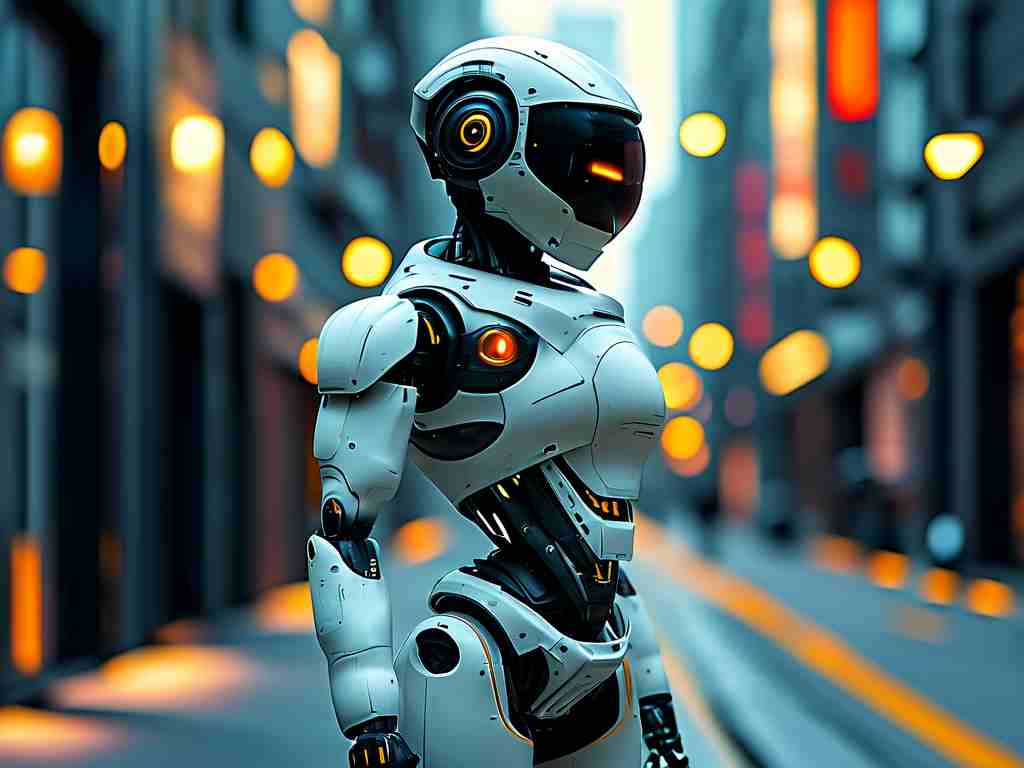Robot sensing technology forms the foundation of how machines perceive and interact with their surroundings enabling them to operate autonomously and intelligently. This field involves the integration of various sensors that detect physical phenomena converting data into actionable insights for robots. Without these advanced tools robots would remain static and incapable of performing complex tasks in dynamic environments. The significance of robot sensing lies in its ability to bridge the gap between digital commands and real-world execution enhancing safety efficiency and adaptability across numerous applications. As robotics evolves sensing technology continues to push boundaries driving innovations that transform industries from manufacturing to healthcare.

Vision sensors represent one of the most prevalent types in robot sensing systems. These include cameras depth sensors and infrared devices that capture visual information allowing robots to identify objects navigate spaces and recognize patterns. For instance industrial robots use high-resolution cameras to inspect assembly lines detecting defects with precision that surpasses human capabilities. Depth sensors such as LiDAR light detection and ranging emit laser pulses to create detailed 3D maps of environments enabling autonomous vehicles to avoid obstacles and plan routes effectively. The development of computer vision algorithms has further amplified these sensors making them essential for tasks like facial recognition in security robots or object manipulation in warehouses. Despite their advantages vision sensors face challenges like poor performance in low-light conditions or high computational demands which researchers are addressing through machine learning optimizations and multi-sensor fusion approaches.
Tactile sensing is another critical area where robots gain a sense of touch through pressure force and texture detection. Sensors embedded in robotic skins or fingertips measure physical interactions providing feedback that mimics human touch. This technology is vital for delicate operations such as surgical robots where precise force control prevents tissue damage during procedures. In consumer robotics tactile sensors help devices like robotic arms handle fragile items in homes or factories ensuring gentle grips and reducing breakage. Recent advancements include flexible electronic skins that can detect subtle changes in pressure or temperature opening doors for more lifelike prosthetics or collaborative robots that work safely alongside humans. However issues like sensor durability and calibration in varying environments pose ongoing hurdles spurring innovations in materials science such as self-healing polymers that extend sensor lifespan.
Auditory and environmental sensors expand robot capabilities by enabling sound and contextual awareness. Microphones and sound processing units allow robots to interpret voice commands detect alarms or identify anomalies in noisy settings enhancing human-robot communication. For example service robots in hospitality use auditory sensors to respond to guest requests improving user experiences. Environmental sensors like gas detectors humidity monitors or temperature gauges help robots adapt to changing conditions such as in agricultural robots that optimize irrigation based on soil moisture readings. These sensors often integrate with wireless networks for real-time data transmission supporting applications in smart cities where robots monitor pollution levels or disaster zones. The challenge here involves minimizing interference from background noise and ensuring accuracy which is mitigated through AI-driven noise cancellation and multi-modal sensor arrays that cross-verify data.
Beyond individual sensors the synergy of multiple sensing technologies creates robust systems for complex scenarios. Fusion techniques combine inputs from vision tactile and auditory sensors providing a comprehensive environmental model that enhances decision-making. Autonomous drones for instance use this approach to navigate urban landscapes avoiding collisions while capturing aerial data. In healthcare robots integrate biosensors to monitor patient vitals during rehabilitation offering personalized feedback. The rise of edge computing allows sensors to process data locally reducing latency and enabling faster responses in time-sensitive tasks like emergency response robots. Yet challenges persist including high costs energy consumption and ethical concerns around data privacy. Innovations in miniaturization and energy-efficient designs are lowering barriers while regulations evolve to ensure responsible deployment.
Looking ahead the future of robot sensing technology is intertwined with artificial intelligence and the Internet of Things. AI algorithms analyze sensor data to predict trends and learn from experiences leading to more adaptive and intelligent robots. For instance predictive maintenance in factories uses sensor data to foresee equipment failures minimizing downtime. Emerging trends include neuromorphic sensors that mimic biological systems for ultra-efficient processing and quantum sensors offering unprecedented sensitivity for scientific exploration. As these technologies mature they will unlock new frontiers such as swarm robotics where multiple robots coordinate sensing efforts for large-scale tasks. Ultimately robot sensing is not just about hardware but a holistic evolution that empowers machines to perceive the world with human-like acuity fostering a future where robots seamlessly integrate into daily life driving progress across global challenges.

